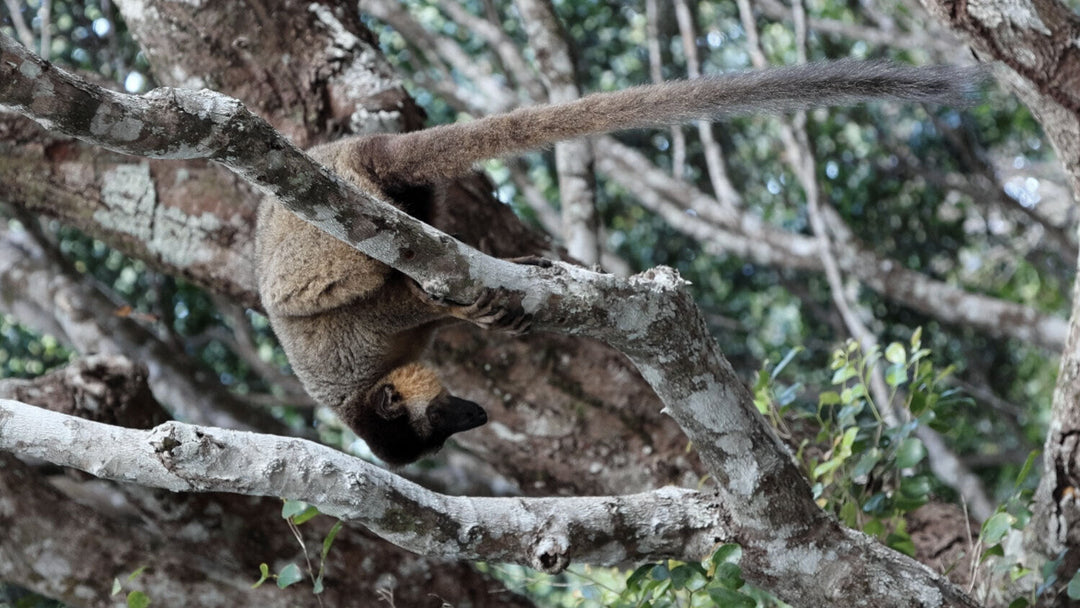SafariSpy: aardvarks, the secretive 'earth pigs'
As our SafariSpy camera has ventured out into South Africa we have met some great people using camera traps to conserve wildlife.
This guest blog is by Dr Amy-Leigh Shuttleworth, who is studying aardvarks with WESSA and the University of KwaZulu-Natal.
Aardvarks, (Orycteropus afer) are medium-sized (40-70 kg), nocturnal mammals with a long, pig-like snout, large ears and a tail resembling that of a kangaroo. They are found in a wide range of habitats across South Africa and feed mainly on ants and termites.

Aardvark (Photo courtesy of Beverly Joubert)
Aardvarks are classified as ‘Least Concern’ on the IUCN Red List of Threatened Species. However, they are reclusive animals and sightings are very rare meaning population numbers may be overestimated and there are large knowledge gaps regarding their ecology. It is crucial that we gain an understanding about this elusive animal’s ecology as a loss of this species may have cascading effects in various ecosystems. Camera traps therefore provide an ideal way to learn more about the actual population status and ecology of this secretive species.
Aardvarks excavate shallow holes in termite mounds or open ground when searching for food, and much larger, deeper burrows are excavated for shelter and as a place to rear their young. Despite popular belief, population numbers cannot be estimated from the number of burrows as aardvarks change burrows frequently and an area may contain many abandoned burrows. Therefore, I have used camera traps to watch twenty aardvark burrows for two weeks to determine aardvark density in the reserve.

The camera traps were also used to identify which other species were visiting and using the burrows. Previous studies have recorded as many as 39 (25 mammals, 7 birds, 6 reptiles and one amphibian) nocturnal and diurnal species making use of aardvark burrows for short or long-term shelter and as a place to rear their young. To date I have recorded 18 (8 mammals, 9 birds; and 1 reptile) species making use of the burrows. This information will be used to investigate possible competition between aardvarks and expanding species.

Cape porcupine using the aardvark hole (Photo courtesy of Amy-Leigh Shuttleworth, using University of KwaZulu-Natal’s camera traps)

Warthog using the aardvarks hole (photo courtesy of Amy-Leigh Shuttleworth, using University of KwaZulu-Natal’s camera traps)
Stay tuned for more SafariSpy adventures!
For more information:
The Wildlife and Environment Society of South Africa
References:
Dean WRJ, Roy Siegfried W. 1991. Orientation of diggings of the aardvark. Journal of Mammalogy 72: 823-824
Lindsey P, Cilliers S, Griffin M, Taylor A, Lehmann T, Rathbun G (IUCN SSC Afrotheria Specialist Group). 2008. Orycteropus afer. In: IUCN 2012. IUCN Red List of Threatened Species. Version 2012.2. <www.iucnredlist.org>. Downloaded on 22 April 2013.
Stuart C, Stuart T. 2001. Field Guide to Mammals of Southern Africa. Struik Publishers: Cape Town. pp 162
Taylor WA, Lindsey PA, Skinner JD. 2002. The feeding ecology of the aardvark Orycteropus
Whittington-Jones GM, Bernard RTF, Parker DM. 2011. Aardvark burrows: a potential resource for animals in arid and semi-arid environments. African Zoology 46: 362-370


